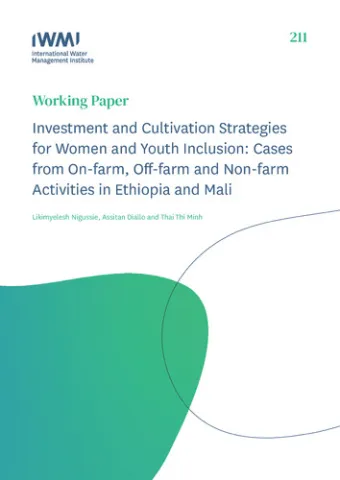Investment and cultivation strategies for women and youth inclusion: cases from on-farm, off-farm and non-farm activities in Ethiopia and Mali

Abstract
Africa's agriculture sector is vital for food security, employment, and economic growth. Women and young people, who contribute to innovation, diversification, and income, face limited opportunities in the sector due to social and economic power imbalances. This disparity wastes resources and impedes agricultural value chain development (VCD). Inclusive VCD aims to empower women, men and youth from diverse social groups and strengthen the agriculture sector. However, the literature on inclusive VCD in Africa is limited due to urban biases, and the lack of a framework to address gender inequality and poverty. This study explores how livelihood assets, strategies for accessing the assets, and enabling and discouraging factors in the value chain shapes the inclusion of women and youth in on-farm, off-farm and non-farm activities. It is based on the Safeguarding Sahelian Wetlands for Food Security (SaWeL) program that aims to make the market work for the poor through inclusive VCD in the Ziway-Shalla Sub-basin of Ethiopia, and Wegnia and Sourou basins in Mali. A qualitative dataset of 32 focus group discussions, 48 key informant interviews and 40 in-depth interviews were analyzed. We identified investment and cultivation inclusion strategies that demonstrates how women and youth from diverse social groups actualize business opportunities, overcome challenges and create new opportunities for inclusion. Investment strategies involve women and youth from better-off households with good access to natural, social, political and physical capital for capital-intensive roles. On the other hand, cultivation strategies involve women and youth from resource-poor households who can harness natural, social and political capital to participate in off-farm and non-farm activities. Our results show that women and youth who adopt either one of the strategies are encouraged by good support from social networks, cooperatives, Government Organizations, Nongovernmental Organizations and private sector actors. However, access to productive resources and services for women and youth adopting any strategies is hampered by gender and intergenerational norms, poverty and insufficient institutional capacity. We argue that it is essential to understand how social disparities and local environments interact to inform the design and implementation of inclusive value chains. Additionally, inclusive value chains necessitate building capacities of institutions at different scales.
